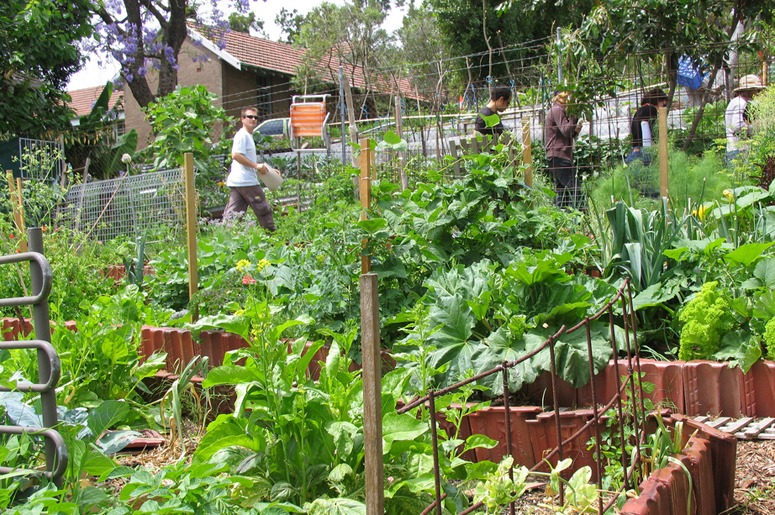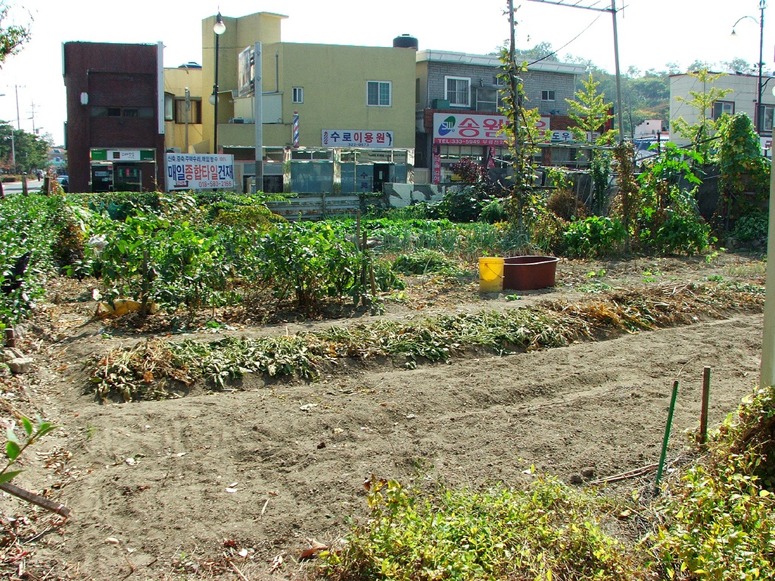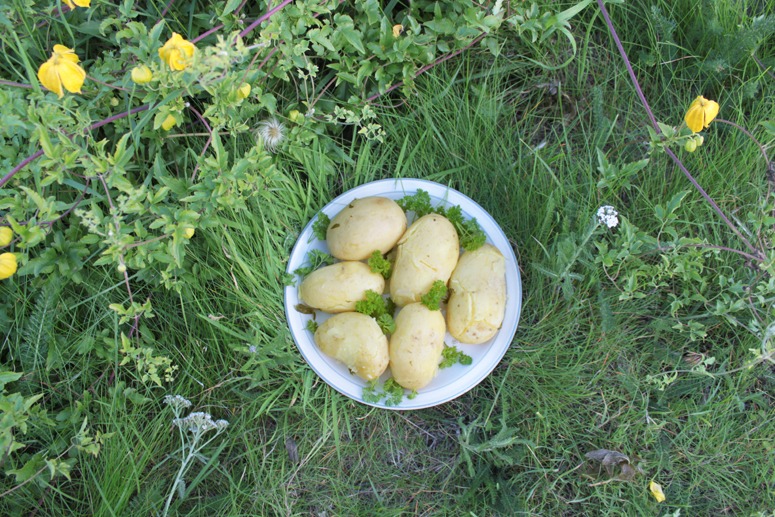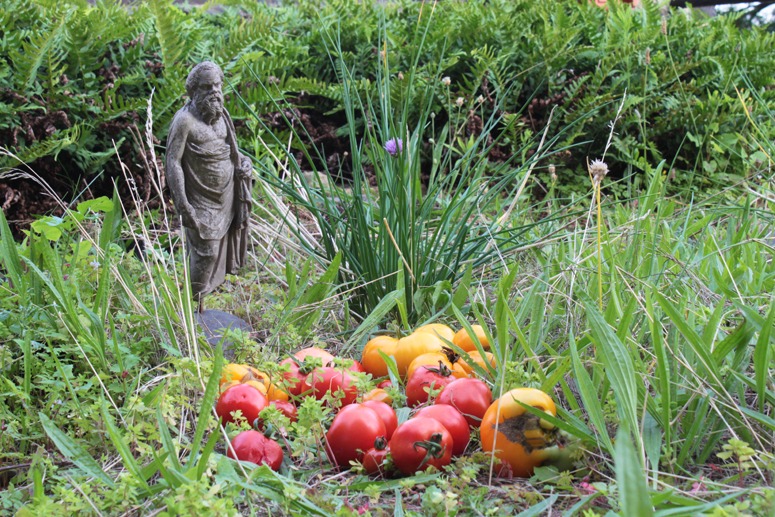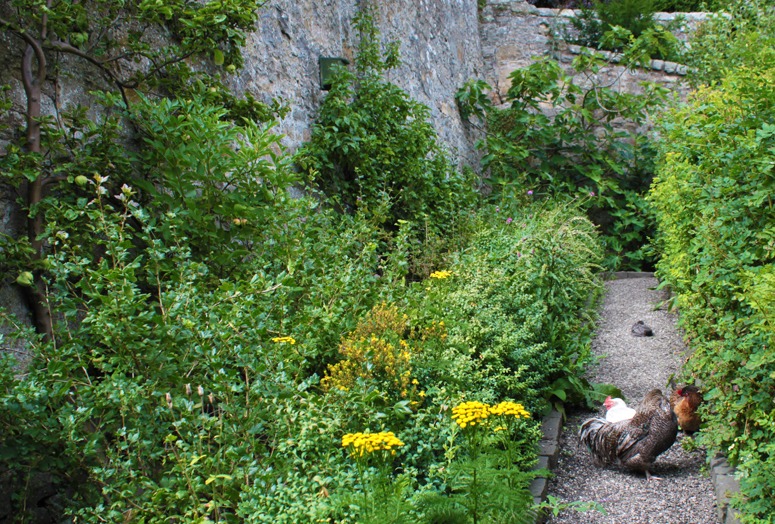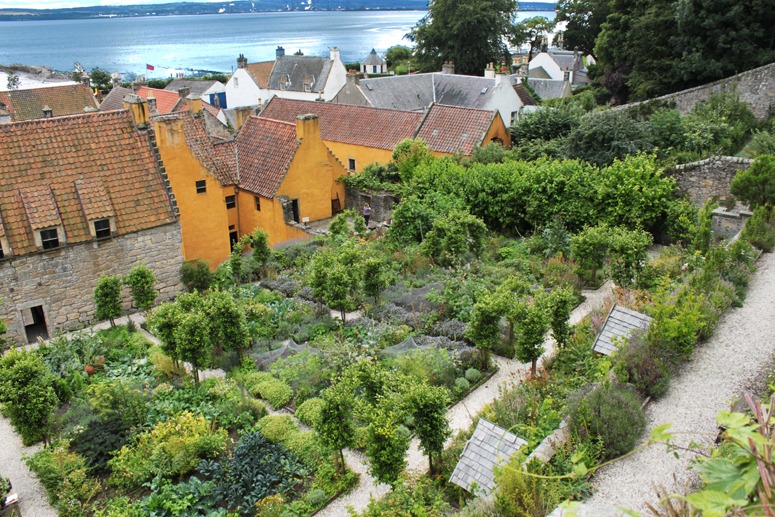Permaculture is an attractive idea and may become an economic necessity (as argued in the video below) when the oil supply begins to run out. Permaculture relates to the ancient agriculture of West Asia but, in its modern form, originated in Australia and was popularised by Bill Mollison. My worry is that too often it looks cheap and nasty, with coloured plastic, rusty iron, wire and junk. My hope is that landscape architects will make it more beautiful and more efficient – so that food forest gardening can become one of the standard approaches to managing vegetation in urban and rural areas. I can add to my concerns about London’s 2012 Olympic Park the fact that it is being designed for recreation, aesthetics and biodiversity only – not for urban food production.
The above image, of Permaculture at Glovers Street Organic Community Garden in Sydney, illustrates the point that if Permaculture is to win the success it deserves then it must look good as well as being good. See the video, below of a beautiful Devon farm and also these links http://video.google.com/videoplay?docid=-6370279933612522952#docid=-918331001764551597 http://urbanhomestead.org/
A 2008 paper from DEFRA examined the UK’s food supply and supplied these figures
- pre – 1750 around 100% (in temperate produce)
- 1750 – 1830s around 90-100% except for poor harvests
- 1870s around 60%
- 1914 around 40%
- 1930s 30 – 40%
- 1950s 40 – 50%
- 1980s 60 – 70%
- 2000s 60%
The amazing figure of 70% in the 1980s was caused by the fabulously generous EU agricultural subsidies. Food prices and the proportion of GDP spent on food has been in decline for half a century. It is now rising and this could be the stimulus to make the UK self-sufficient in food. This ignores the UK’s reliance on oil to produce the food but, as argued in the video, this problem could be solved by a change to forest gardening and permaculture techniques.

